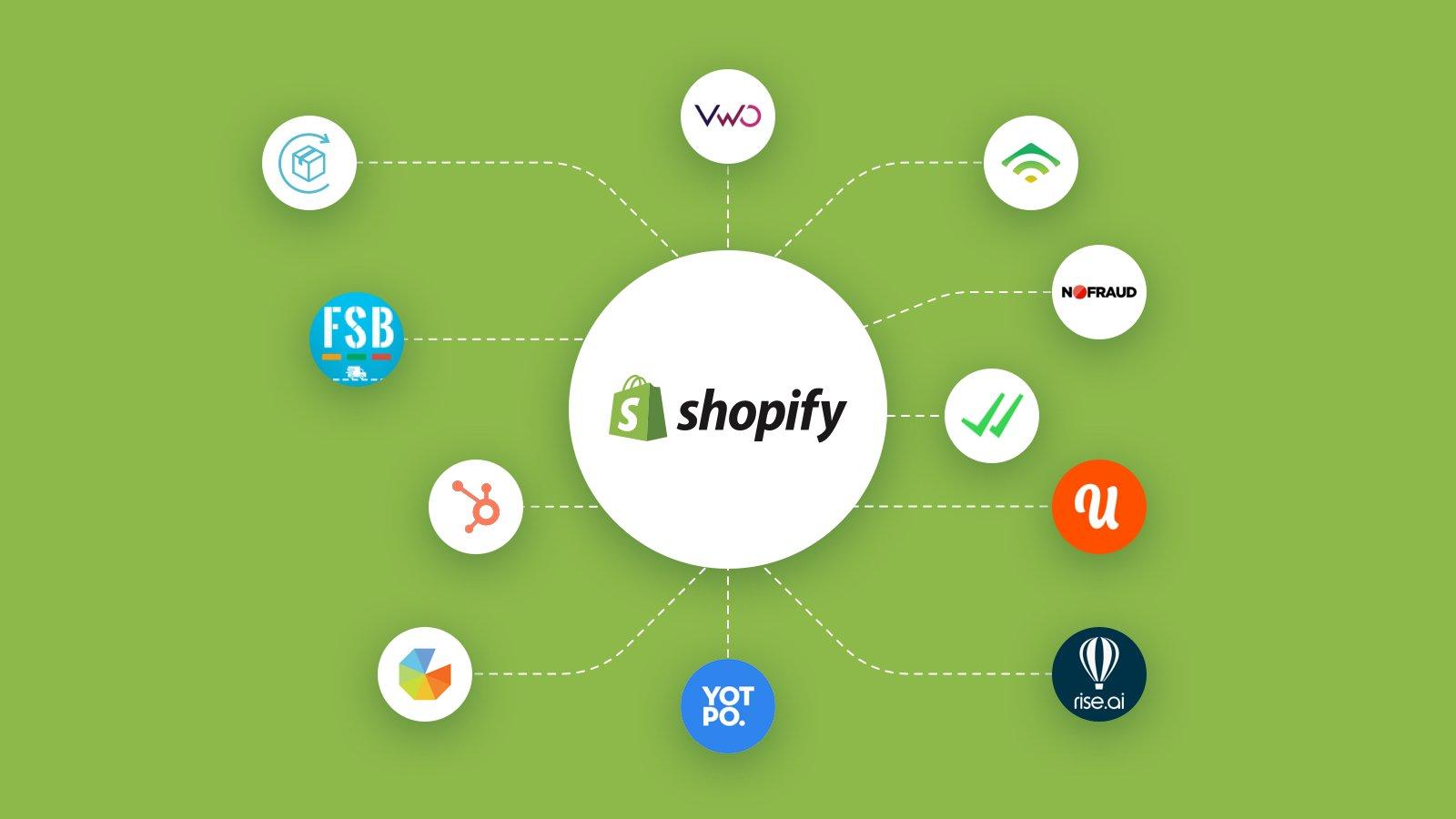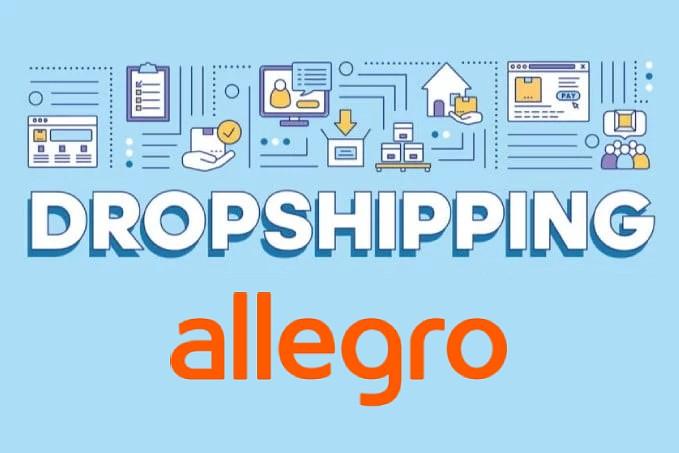In the fast-paced world of eCommerce, where every second counts and every customer interaction matters, staying organized and efficient is more crucial than ever. If you’ve ever felt overwhelmed by the endless tasks of managing your online business—like keeping track of inventory, sending out timely emails, or nurturing customer relationships—you’re not alone. the good news? Marketing automation tools are here to save the day! Imagine having a powerful ally that streamlines your operations, enhances customer engagement, and boosts your sales—all while giving you back precious time to focus on what truly matters. in this article, we’ll dive into 21 must-have marketing automation tools that can revolutionize the way you run your eCommerce business. Whether you’re a seasoned pro or just starting out, these tools will help you simplify your processes, increase efficiency, and ultimately drive growth. Ready to transform your online store? Let’s explore how these innovative solutions can take your business to the next level!
Understanding the Power of Marketing Automation for Ecommerce
In the fast-paced world of ecommerce,staying ahead of the competition requires more than just a great product; it demands a well-oiled marketing machine. Marketing automation offers a powerful solution by streamlining various processes, allowing online businesses to focus on growth and customer engagement. By automating repetitive tasks, businesses can save time and resources while delivering personalized experiences to their customers.
Imagine being able to send targeted emails based on customer behaviour without lifting a finger.With marketing automation, this is not just a dream; it’s a reality. Here are some key benefits:
- Time Efficiency: Automate tasks such as email campaigns, social media posts, and customer follow-ups to free up your team’s time for strategic initiatives.
- Personalization: Create tailored experiences by segmenting your audience and sending relevant content at the right time.
- Data-Driven Decisions: Use analytics to gain insights into customer behavior, enabling informed decisions that drive sales and improve customer satisfaction.
Moreover, marketing automation tools can significantly enhance your customer relationship management. By integrating customer data across various touchpoints, you can maintain a cohesive strategy that nurtures leads throughout the sales funnel. This is especially crucial for ecommerce, where the buying decision can be influenced by multiple interactions. Consider how automation can definitely help you:
| Touchpoint | Automated Action |
|---|---|
| Website Visit | Trigger a personalized email offering a discount on viewed products |
| Cart Abandonment | Send a reminder email with incentives to complete purchase |
| Post-Purchase | offer complementary products through follow-up emails |
Lastly, the ability to run A/B tests on your marketing campaigns is invaluable. With automation tools, you can quickly assess the effectiveness of different strategies and optimize them based on real-time data. This flexibility not only enhances customer engagement but also drives conversions, ultimately leading to increased revenue.
embracing marketing automation in your ecommerce strategy isn’t just about efficiency; it’s about creating a seamless experience that resonates with your customers. As you explore the landscape of marketing automation tools, remember that the key lies in selecting solutions that align with your business goals and customer needs. The right tools can transform your ecommerce operations, paving the way for sustainable growth and success.
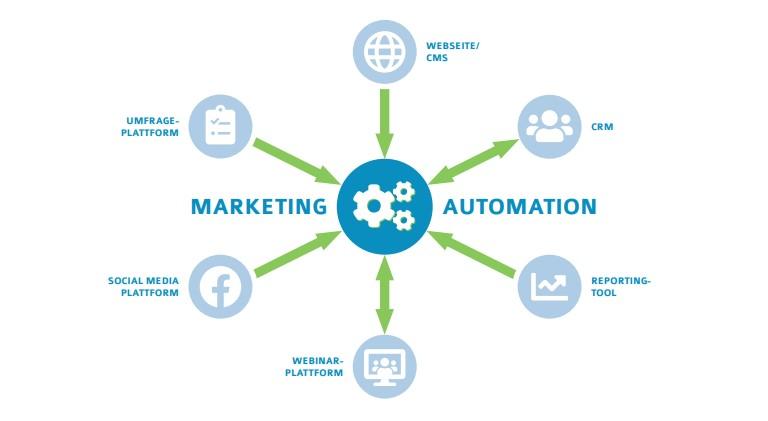
Top Benefits of Using Marketing Automation Tools for Your Online store
Integrating marketing automation tools into your online store can transform the way you manage customer relationships and streamline your business processes. These tools provide a seamless experience that not only enhances customer engagement but also drives sales growth.Here are some key advantages that you can leverage.
- Time Efficiency: Automating repetitive tasks such as email campaigns,social media posting,and lead tracking saves valuable time. This allows you to focus on strategic activities that drive your business forward.
- Personalization at Scale: Marketing automation enables you to segment your audience effectively. By delivering tailored messages and recommendations based on customer behavior, you enhance the shopping experience and foster loyalty.
- Data-Driven Insights: With built-in analytics, you can easily track customer interactions and assess the performance of marketing campaigns. This data helps you make informed decisions, optimize strategies, and improve ROI.
- Improved Customer Engagement: Automated follow-ups and personalized content keep your customers engaged and informed. This leads to higher conversion rates and encourages repeat purchases.
- Cost-Effectiveness: Reducing manual efforts means lower operational costs. Investing in automation tools can yield a meaningful return by enhancing efficiency and boosting sales.
to illustrate the potential impact of marketing automation tools, consider the following table that summarizes their benefits:
| Benefit | Description |
|---|---|
| Time Saving | Reduces the need for manual tasks, freeing up resources. |
| Enhanced Personalization | Delivers targeted messages to specific customer segments. |
| Analytics & Reporting | Gathers data to refine and improve marketing strategies. |
| Higher Engagement | keeps customers informed, boosting interaction and sales. |
| Cost-Efficiency | Lowers operational costs while maximizing profit potential. |
Ultimately, embracing marketing automation tools not only simplifies your operations but also positions your online store for sustained growth in a competitive marketplace. By harnessing these technologies, you can transform customer experiences and drive your business toward unprecedented success.
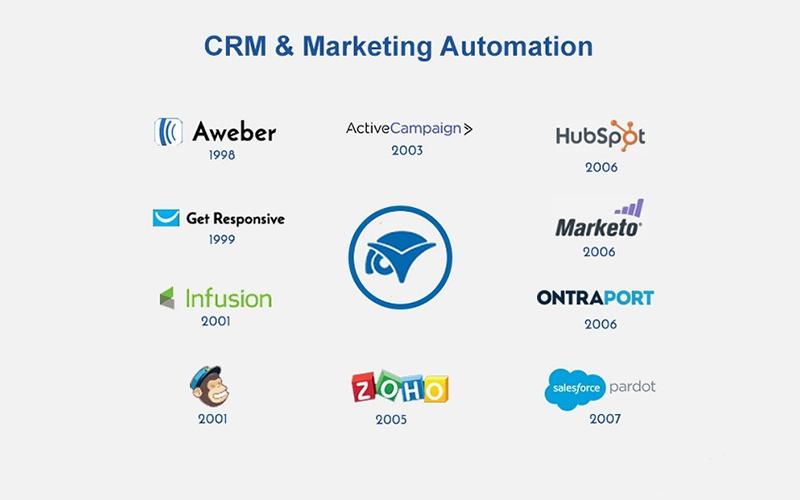
How to Choose the Right Marketing Automation Tool for Your Needs
Choosing the right marketing automation tool can be a game-changer for your ecommerce business. With a plethora of options available, it’s essential to identify your specific needs before diving into a selection. Here are some factors to consider:
- Features: Does the tool offer the functionalities you need? Look for capabilities such as email marketing, social media management, and analytics.
- Scalability: Will the tool grow with your business? Ensure that it can handle increased demand as your sales and customer base expand.
- User-Friendliness: Is the interface intuitive? A tool that’s easy to navigate can save you time and reduce frustration.
- Integration: can it seamlessly connect with your existing systems? Opt for tools that work well with your website, CRM, and other essential applications.
Another critical aspect to evaluate is pricing. Many marketing automation tools offer tiered pricing structures. Make sure to consider not just the initial costs but also any hidden fees associated with additional features or increased usage. Here’s a simple table comparing some popular tools and their pricing tiers:
| Tool | Basic Plan | Pro Plan | Enterprise Plan |
|---|---|---|---|
| Tool A | $29/month | $79/month | $199/month |
| Tool B | $49/month | $99/month | Custom pricing |
| Tool C | $19/month | $59/month | Custom pricing |
Lastly, don’t underestimate the importance of customer support. A responsive support team can dramatically improve your experience, especially if you encounter issues or have questions. Look for tools that offer multiple support channels, such as live chat, email, and phone support. Reading user reviews can also provide insight into the level of service you can expect.
By carefully considering these factors—features, scalability, pricing, integration, and support—you can make a well-informed decision that aligns with your ecommerce goals. The right marketing automation tool will not only streamline your operations but also enhance your marketing efforts, leading to better customer engagement and increased sales.

Exploring Essential Features to Look for in Ecommerce Automation Tools
When diving into the world of ecommerce automation tools, understanding the essential features can significantly elevate your online business operations. the right tools not only streamline processes but also empower you to focus on growth and customer engagement. Here are some key features to consider:
- Integrations: Look for tools that easily integrate with your existing platforms, such as your ecommerce site, payment processors, and inventory management systems.Seamless connectivity ensures that data flows smoothly between different systems, reducing manual entry and errors.
- Easy-to-use interface: A user-pleasant dashboard can make a world of difference. Choose tools that are intuitive and don’t require an extensive learning curve. This ensures that you and your team can quickly adapt and utilize all the features effectively.
- Analytics and Reporting: Comprehensive analytics tools allow you to track performance metrics with ease. Look for features that offer real-time data and customizable reports, enabling you to make informed decisions based on actionable insights.
Another critical aspect is customer segmentation. Effective automation tools should enable you to categorize your audience based on their behavior,preferences,and purchase history. This capability allows for targeted marketing campaigns that resonate with different segments, enhancing engagement and conversion rates.
Also, consider the level of personalization offered. Automation tools that allow for dynamic content creation can tailor messages for individual customers. This might include personalized emails, product recommendations, or even special promotions based on past interactions, making your outreach far more effective.
| Feature | importance |
|---|---|
| Integrations | Enhances workflow efficiency |
| User Interface | Facilitates fast adoption |
| Analytics | Drives data-informed decisions |
| Customer Segmentation | Improves targeting and engagement |
| Personalization | Boosts customer loyalty |
Lastly, don’t overlook support and resources provided by the tool’s developers. Comprehensive support, tutorials, and a vibrant user community can make troubleshooting and learning new features much easier. Investing in a tool that offers robust support can save you time and frustration down the line.
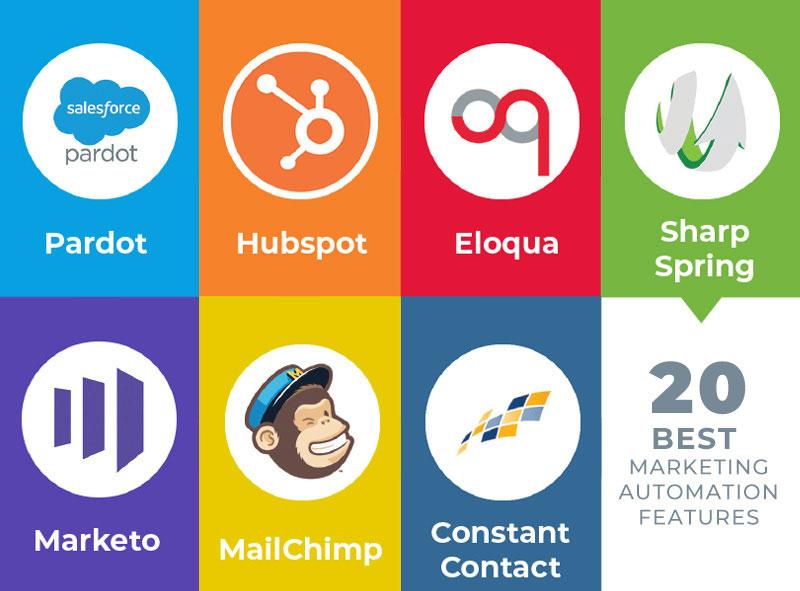
Best Marketing Automation Tools to Streamline Your Email Campaigns
In today’s fast-paced digital marketplace, leveraging the right marketing automation tools can significantly enhance your email campaigns and overall customer engagement. These platforms not only save time but also help in delivering personalized content that resonates with your audience, driving higher conversion rates.
Key Features to Look For:
- Segmentation: Choose a tool that allows you to easily segment your email list based on user behavior, demographics, and purchase history. This ensures that your emails are relevant to each recipient.
- A/B Testing: Look for software that facilitates A/B testing for subject lines, content, and send times to optimize performance and engagement.
- Analytics and Reporting: The ability to track open rates, click-through rates, and conversions in real-time is vital. Choose tools that offer comprehensive analytics to understand what’s working and what isn’t.
- Integration Capabilities: Ensure that the automation tool integrates seamlessly with your existing eCommerce platform and CRM systems for a unified workflow.
Some of the standout marketing automation tools that can help streamline your email campaigns include:
| Tool | Key Features | Best For |
|---|---|---|
| Mailchimp | Email templates, audience segmentation, analytics | Small to medium businesses |
| HubSpot | All-in-one marketing, CRM integrations | Growing businesses |
| ActiveCampaign | Email automation, segmentation, CRM | Marketing teams |
| Klaviyo | data-driven emails, SMS marketing | Ecommerce brands |
By utilizing these tools, you can automate repetitive tasks, deliver targeted messages, and nurture leads through personalized email journeys. Imagine having the ability to set up drip campaigns that engage customers based on their interactions with your brand. This not only improves customer satisfaction but also boosts loyalty and repeat sales.
Investing in the right marketing automation software can provide a substantial return on investment. With features designed to enhance customer engagement and streamline operations, these tools can transform how you connect with buyers in the ever-evolving eCommerce landscape.
Boosting Customer Engagement with Automation: Strategies that Work
In the fast-paced world of eCommerce, maintaining customer engagement can be a challenge. However, with the right automation tools, you can streamline your dialog and keep your customers invested in your brand. Personalization is key; automation enables you to tailor your messages based on customer behavior and preferences, ensuring they receive relevant content that resonates with their interests.
Utilizing data analytics is another powerful strategy. By leveraging insights gathered from customer interactions, you can create targeted campaigns that speak directly to your audience. Consider implementing tools that allow you to segment your customers based on their shopping habits or demographics. This will help you deliver timely messages, such as abandoned cart reminders or product recommendations, increasing the chances of conversion.
Integrating multi-channel communication is also crucial for boosting engagement.Automation tools can help you maintain a presence across various platforms—social media, email, SMS, or even chatbots on your website. This ensures that you’re meeting customers where they are, providing them with consistent facts and support during their purchasing journey.
Moreover,creating a sense of community can significantly enhance customer loyalty. Consider using automation to nurture relationships through follow-up emails that invite customers to join a loyalty program or share their experiences on social media. encouraging user-generated content not only amplifies your brand’s reach but also fosters a sense of belonging among your customers.
| Strategy | Benefit |
|---|---|
| Personalization | Increases relevance and engagement. |
| Data Analytics | Helps in creating targeted campaigns. |
| Multi-channel Communication | Ensures customer support across platforms. |
| Community Building | Enhances customer loyalty and brand affinity. |
By adopting these strategies, you not only automate your processes but also create meaningful interactions with your customers. This combination can lead to lasting relationships, increased sales, and a thriving online business.Embrace the power of automation and watch your customer engagement soar!
Integrating Social Media Automation into Your Ecommerce Strategy
In today’s fast-paced digital landscape, can be a game-changer. By automating your social media efforts, you free up precious time to focus on other critical areas of your business while still engaging with your audience. Imagine posting relevant content at optimal times without lifting a finger—this is the power of social media automation.
One of the key benefits of using automation tools is the ability to maintain a consistent online presence. A well-planned posting schedule ensures that your audience is always engaged, which can lead to increased brand visibility and loyalty. Consider the following advantages:
- Time Efficiency: Schedule posts in advance and watch your engagement grow even when you’re not actively online.
- Data-Driven Insights: Many tools provide analytics that help you understand what content resonates best with your audience.
- Targeted Campaigns: Tailor your social media posts to specific demographics, ensuring the right message reaches the right people.
automation doesn’t mean losing the human touch. Actually, it allows you to focus on creating more authentic interactions with your customers. Use automated tools to boost your eCommerce sales by sharing special promotions, product launches, or customer testimonials. These elements not only drive traffic to your store but also foster community and trust.
To effectively incorporate social media automation into your eCommerce strategy, consider these essential tools:
| Tool Name | Key Features | Best For |
|---|---|---|
| Buffer | Scheduling, Analytics, Engagement | Small to Medium Businesses |
| Hootsuite | Multi-Platform Management, Tracking | Large Enterprises |
| Later | Visual Planning, Content Calendar | Instagram Focused Brands |
| Sprout Social | Comprehensive Reporting, Team Collaboration | Marketing Teams |
Incorporating these tools into your eCommerce strategy not only enhances productivity but also amplifies your reach. As you streamline your operations, you’ll notice a significant boost in customer engagement and sales. By automating routine tasks, you can dedicate your time to crafting compelling content and building relationships that turn your one-time buyers into loyal customers.

Maximizing Sales with Cart Abandonment Recovery Tools
Every eCommerce business faces the challenge of cart abandonment, where potential customers leave their shopping carts without completing a purchase.This phenomenon can be frustrating, especially when you know how close they were to making a transaction. Implementing effective recovery tools is essential for turning those lost opportunities into prosperous sales. By leveraging automation, you can engage with these customers promptly, reminding them of their abandoned carts and encouraging them to complete their purchases.
Email reminders are one of the most powerful tools in your arsenal. when a customer abandons their cart, an automated email can be sent within hours, gently reminding them of the items they left behind. Consider using engaging subject lines and personalized content to capture their attention. Highlighting special offers,such as discounts or free shipping,can further incentivize them to return and finalize their purchase.
Another effective strategy is to utilize exit-intent pop-ups on your website. These pop-ups appear when a user is about to leave the site, offering them a last-minute deal or a reminder of their cart contents. This tactic not only reduces abandonment rates but can also enhance the customer experience by making them feel valued and understood.
Implementing retargeting ads is also crucial for recovering lost sales. By tracking users who visited your site and abandoned their carts, you can display targeted ads on social media or other websites they visit. This persistent presence keeps your products top-of-mind and increases the likelihood of conversion. Pairing these ads with dynamic content that showcases the exact products they left behind can create a personalized experience that resonates with potential buyers.
| Tool | Key Features |
|---|---|
| Cart Abandonment Email | Automated reminders, personalized content, incentives |
| Exit-Intent Pop-ups | Last-minute offers, cart reminders, user engagement |
| Retargeting Ads | Targeted ads, dynamic content, brand recall |
analyzing your cart abandonment data is crucial.Utilize analytics tools to understand why customers are leaving their carts behind. Are there issues with the checkout process? Is shipping too expensive? By identifying these pain points,you can refine your strategy,improving not only your recovery rates but also the overall shopping experience. Implementing cart abandonment recovery tools is not just about recovering lost sales; it’s about building lasting relationships with your customers and ensuring they feel valued,ultimately driving loyalty and growth for your eCommerce business.

analytics and Reporting: Why They Matter in Your Automation Journey
In the digital landscape of eCommerce, data is your best friend. Analytics and reporting are not just technical terms; they are the compass guiding your marketing automation efforts. Without them, you’re essentially sailing in uncharted waters, making decisions without a clear understanding of your audience’s behavior and preferences.
By leveraging analytics, you can track customer interactions across various touchpoints, from initial website visits to completed purchases. This data allows you to identify trends and patterns that inform your marketing strategies.Such as, knowing which products are frequently abandoned in carts can help you devise targeted email campaigns that nudge potential buyers towards completing their transactions.
Furthermore, comprehensive reporting provides insights into the effectiveness of your campaigns. This means you can easily assess which marketing tactics are working and which aren’t. Key performance indicators (KPIs) such as open rates, click-through rates, and conversion rates become your metrics for success. with this information at your fingertips, you can fine-tune your strategies to maximize ROI and improve customer engagement.
Consider utilizing automated reporting tools. These tools not only save time but also ensure you never miss critical data points that could influence your next campaign. Below is a quick overview of essential metrics you should be monitoring:
| Metric | Description |
|---|---|
| Conversion Rate | Percentage of visitors who make a purchase. |
| Customer Acquisition Cost (CAC) | Cost associated with acquiring a new customer. |
| Cart Abandonment Rate | Percentage of shoppers who leave items in their cart. |
| Email Open Rate | Percentage of recipients who open your marketing emails. |
Integrating analytics and reporting into your marketing automation journey not only enhances your decision-making process but also empowers you to create personalized experiences for your customers. The more you understand their needs and behaviors, the better you can tailor your marketing efforts, ultimately leading to increased loyalty and higher sales.

Real Success Stories: Ecommerce Brands Transforming with Automation Tools
In the dynamic world of ecommerce,brands are increasingly turning to automation tools to streamline their operations and enhance customer experiences. One standout example is Fashionista, a clothing brand that saw a 40% increase in sales after implementing an automated email marketing system. By customizing their email campaigns based on customer behavior, they not only reached their audience more effectively but also boosted engagement and retention.
Similarly, Gadget Guru, an electronics retailer, leveraged automation for inventory management. With advanced data analytics tools, they reduced stockouts and optimized their supply chain processes. This strategic shift allowed them to maintain optimal inventory levels, ensuring that they met customer demand without overstocking—resulting in a 30% decrease in operational costs.
Another remarkable transformation came from Home Decor Haven, a home goods ecommerce store that integrated chatbots into their customer service strategy.By automating responses for frequently asked questions,they significantly improved their response time and customer satisfaction ratings. customers loved the immediate assistance,which led to a 25% increase in conversion rates during peak shopping times.
Many brands also find value in using social media automation tools. As an example, Pet Paradise, an online pet supply store, utilized social media scheduling tools to maintain a consistent online presence. Their strategic posts about promotions and product launches generated a 50% increase in social media engagement and directed more traffic to their website.
| Brand | Automation Tool | Success Metric |
|---|---|---|
| Fashionista | Email Marketing Automation | 40% Sales Increase |
| Gadget Guru | Inventory Management | 30% Cost Reduction |
| Home Decor Haven | Chatbots | 25% Conversion Rate Increase |
| Pet Paradise | Social Media Scheduling | 50% Engagement Boost |
These stories exemplify how ecommerce brands are not just surviving but thriving in an increasingly competitive landscape through the power of automation. By embracing these tools, they are not only enhancing efficiencies but also creating a seamless shopping experience that keeps customers coming back for more.
Frequently Asked Questions (FAQ)
Q&A: 21 Marketing Automation Tools for Ecommerce: Simplify Your Online Business Operations
Q: What are marketing automation tools,and why should ecommerce businesses use them?
A: Great question! Marketing automation tools are software solutions designed to streamline and automate marketing tasks. For ecommerce businesses, these tools can save time, improve efficiency, and enhance customer engagement. By automating repetitive tasks like email campaigns, social media posts, and customer segmentation, you free up your valuable time to focus on strategy and growth.
Q: Can you give me an example of a task that can be automated?
A: Absolutely! One common task is email marketing. With automation tools, you can set up welcome emails for new subscribers, cart abandonment reminders, and personalized product recommendations. This means your customers receive timely and relevant messages without you having to lift a finger after the initial setup.
Q: What should I look for in a marketing automation tool?
A: When choosing a tool,consider features like ease of use,integration capabilities with your existing ecommerce platform,customer support,and pricing. It’s also crucial to check if the tool offers robust analytics and reporting features to help you measure your campaign performance effectively.
Q: are these tools only for large businesses, or can small businesses benefit too?
A: Marketing automation tools are definitely beneficial for businesses of all sizes! In fact, small businesses can gain a competitive edge by utilizing these tools to maximize their marketing efforts without needing a massive budget. Many tools offer scalable plans that cater specifically to startups and small enterprises.
Q: Can you highlight a few specific marketing automation tools that ecommerce businesses should consider?
A: Sure! Some top contenders include Mailchimp for email marketing, HubSpot for inbound marketing, Klaviyo for personalized automation, and Zapier for connecting different apps together seamlessly. Each tool has its unique strengths, so picking the right one depends on your specific needs and goals.
Q: How do these tools actually simplify business operations?
A: By automating routine tasks, these tools reduce the likelihood of human error and ensure consistency in your marketing efforts. They also enable you to segment your audience better, leading to more targeted campaigns. This means higher engagement rates and ultimately, more sales. It’s all about working smarter, not harder!
Q: What results can I expect after implementing marketing automation tools in my ecommerce business?
A: While results can vary, many businesses report increased sales, improved customer retention, and enhanced operational efficiency after implementing these tools. You might also see better customer insights through analytics, allowing you to refine your strategies for even greater success.
Q: Are there any common mistakes to avoid when using marketing automation tools?
A: Definitely! One common mistake is treating automation as a “set it and forget it” solution.it’s essential to regularly review your campaigns, analyze results, and adjust your strategies accordingly. Also, don’t overwhelm your customers with too many automated messages—balance is key!
Q: Where can I find more information about these tools?
A: You can start by checking out our article on “21 Marketing Automation Tools for Ecommerce.” It provides a detailed overview of each tool, along with tips on how to integrate them into your business operations effectively. It’s a great resource to help you make informed decisions!
Q: Is there anything else I should know before diving into marketing automation?
A: Just remember that while these tools are incredibly powerful,they should complement your overall marketing strategy,not replace the human touch. Building genuine relationships with your customers is still vital. Use automation to enhance your efforts and watch your ecommerce business thrive!
The Way Forward
As we wrap up our exploration of the 21 must-have marketing automation tools for ecommerce, it’s clear that embracing technology can transform how you run your online business.Whether you’re looking to streamline your marketing efforts, enhance customer engagement, or boost sales, these tools are your allies in navigating the fast-paced world of ecommerce.
Remember, the right automation tools don’t just save you time; they empower you to focus on what truly matters—building relationships with your customers and growing your brand. So why wait? Dive into the world of marketing automation and watch your ecommerce business thrive like never before.
If you’re ready to take that leap forward, start experimenting with these tools today. Your future self will thank you! And don’t forget to share your experiences and insights with us; we’d love to hear how these tools make a difference in your journey. Happy automating!


